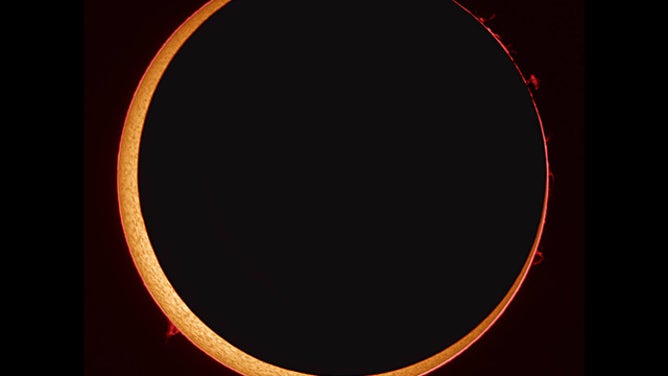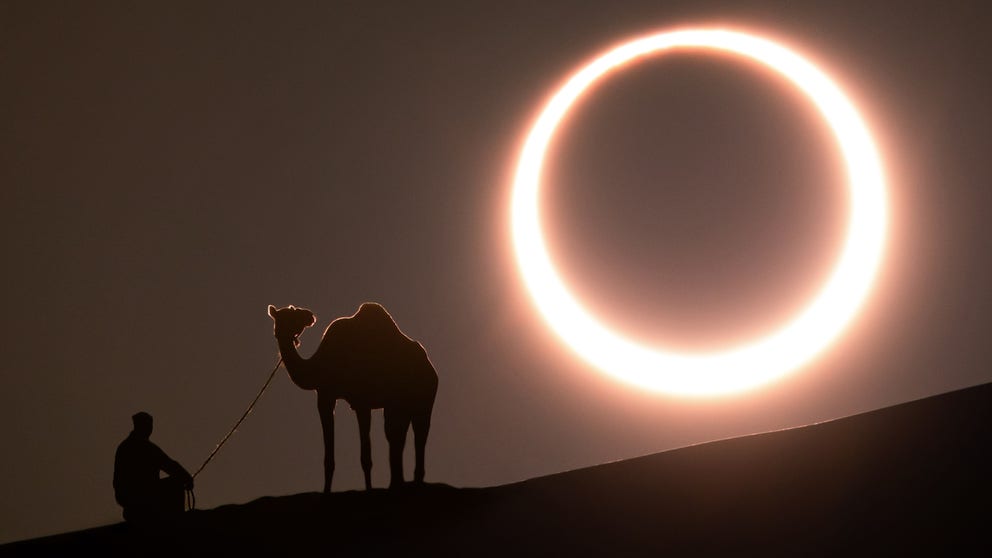Where to view the October 2023 annular solar eclipse based on historical weather
Maximum eclipse will happen in parts of Oregon, California, Nevada, Arizona, Utah, New Mexico and Texas. To help you decide on a location to view the eclipse, here’s a look at historical weather data for the month of October in several locations along the path of the annular eclipse.
What is a solar eclipse? The different types and how they happen
During a total or annular solar eclipse, the moon passes in front of the sun and casts its shadow upon the Earth's surface.
The western United States, Mexico, Central and South America will experience an annular eclipse in October as the Moon moves in front of the Sun, and those along the path of the maximum eclipse will need clear skies for the best view of the "ring of fire."
The annular eclipse happens on Oct. 14, starting in southwestern Oregon at 9:13 a.m. PDT and ending in Corpus Christi, Texas, at 12:03 p.m. CDT.
An annular eclipse is not a total eclipse because the Moon doesn’t entirely block the sun’s light, only 90%. This is because an annular eclipse happens when the Moon is at its furthest point in orbit from Earth.
WILL WEATHER COOPERATE FOR TOTAL SOLAR ECLIPSE IN APRIL 2024?
Also, unlike a total eclipse, during which you can take your eclipse glasses off during totality, you will still need to keep them on for the maximum eclipse. Make sure to wear eclipse glasses; using regular sunglasses is not safe.

NASA file photo: Since the Moon appears smaller than the Sun during an annular solar eclipse, the Sun peeks out from around the Moon. (Credits: Stefan Seip/NASA)
(NASA)
Peak eclipse will happen in parts of Oregon, California, Nevada, Arizona, Colorado, Utah, New Mexico and Texas, but surrounding states will still have a partial eclipse.
Weather in mid-October in the West will offer mild temperatures for eclipse viewers, and the Southwest monsoon season will have just ended in September.
About a week before the Oct. 14 eclipse, the FOX Forecast Center will provide a detailed forecast for viewing locations during the ring of fire.
To help you decide on a location to view the eclipse, here’s a look at the National Weather Service's historical weather data from 2000 to the present for the month of October in several locations along the path of the annular eclipse.
If you want to be in the first state along the eclipse path, the Medford, Oregon, region sees 1.22 inches of rain on average for the month of October, with a mean maximum temperature of 70 degrees and a mean low temperature of 42 degrees.

A map showing average rainfall in October in Arizona, Utah, Nevada and Oregon cities along the path of the annular solar eclipse.
(FOX Weather)
Nevada and New Mexico look to be the best bet for a rain-free and cloudless sky to view the annular solar eclipse.
Elko, Nevada, receives an average of .79 inches of rain in October and Albuquerque averages .87 inches.
More than 500 balloons will ascend into the sky during the ring of fire at the Albuquerque International Balloon Fiesta this year.
Several National Parks are along the path of maximum eclipse or very close by, which would still make a great view. Canyonlands National Park in Utah will experience a maximum eclipse around 10:30 a.m. MDT. In October, the National Weather Service shows the park averages 1.22 inches of rain and a mean high temperature of 64.6 degrees.
"In general, it's a really, really lovely time of year," Canyonlands National Park Ranger Cadence Cook told FOX Weather.
Eclipse chasers in South Texas and West Texas will have lots of choices for their viewing locations. West Texas will be a better bet to avoid the rain as San Antonio and Corpus Christi both average more than 3 inches of rain in October.
Next year, a large swath of the U.S. will experience a total solar eclipse on April 8. The event, known as the Great American Eclipse, will start in Mexico before crossing Texas and 14 other U.S. cities.
